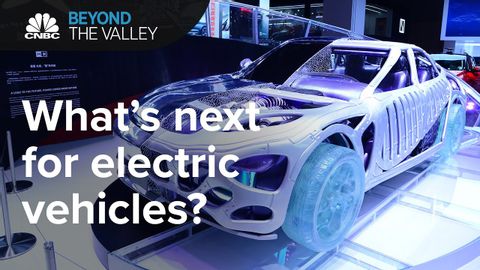?電動汽車的繁榮是真實的--但道路並不平坦 | Beyond The Valley (? The electric vehicle boom is real — but the road won't be easy | Beyond The Valley)
Summer 發佈於 2021 年 06 月 01 日  沒有此條件下的單字
沒有此條件下的單字US /sɪɡˈnɪfɪkənt/
・
UK /sɪgˈnɪfɪkənt/
US /pænˈdɛmɪk/
・
UK /pæn'demɪk/
- adj.(疾病)大規模流行的,廣泛蔓延的
- n.大流行病
US /ˈstrætədʒi/
・
UK /'strætədʒɪ/
US /ˌsɪtʃuˈeʃən/
・
UK /ˌsɪtʃuˈeɪʃn/
